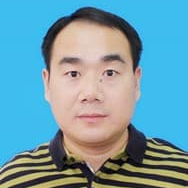Transport Phenomena in Porous Media and Fractal Geometry
A special issue of Fractal and Fractional (ISSN 2504-3110). This special issue belongs to the section "Engineering".
Deadline for manuscript submissions: closed (30 May 2023) | Viewed by 2519
Special Issue Editors
Interests: fractal characterization of porous rock; fluid mechanics in porous media; fracture mechanics in porous rock; heat and mass transfer; hydraulic fracturing mechanics
Special Issues, Collections and Topics in MDPI journals
Interests: analytical fractal modeling; fractional-derivative equation; power-law fluid mechanics; heat and mass transfer; fibrous porous media; roughness of porous media
Special Issues, Collections and Topics in MDPI journals
Special Issue Information
Dear Colleagues,
Heat and mass transport in porous media have been found to serve in a large number of practical applications, such as petroleum engineering for the economic development of the unconventional reservoir, fuel-cell industry, particularly hydrogen fuel-cell, which generates energy in a more efficient and cleaner manner, and optimization and production of fibrous that contribute to contain the COVID-19, etc. It is, however, notoriously difficult to characterize the transport accurately, mainly due to the highly complicated structure of porous media.
Various numerical methods have been developed for the characterization of the transport in porous media, such as the Finite Element Method (FEM) which enables a more-generous analysis and the Boundary Element Method (BEM) which leads to a potentially more-accurate computation in a more-restricted way. Although numerical implementations differ from case to case, they can hardly reveal the physics involved during the transport clearly or provide generalized formulation consequently, leading to the requirement of analytical analysis. On the other hand, microstructures of most of the natural- and artificial porous media have been found to follow the fractal geometry, enabling analytical analysis of the complicated structure of porous media with the fractal theory. Once the microstructures have been characterized precisely, the transport properties, such as permeability, thermal conductivity, diffusion coefficient, etc., can be quantified as a consequence. In recent decades, the investigation of the fractal theory has been brought for further precise analysis of the transport, for example, determination of the roughness of inner surfaces of porous media.
The Special Issue concentrates on the state of the art in fractal-based method on transport in porous media, combined with other recent experiments and numerical simulations, offering a more-in-depth insight. Therefore, you are invited to submit original research papers and comprehensive review articles on, but not limited to, the following topics:
- Multi-scaled characterization of porous media with fractal theory;
- Analytical fractal modeling of transport in porous media combined with other theoretical, numerical, and/or experimental methods;
- Modeling of fractal-tree-like networks in porous media;
- Fractal characterization of the roughened surface of porous media and its effects on the transport;
- fractional-derivative analysis of power-law fluid in porous media.
Dr. Gongbo Long
Prof. Dr. Boqi Xiao
Dr. Mingchao Liang
Guest Editors
Manuscript Submission Information
Manuscripts should be submitted online at www.mdpi.com by registering and logging in to this website. Once you are registered, click here to go to the submission form. Manuscripts can be submitted until the deadline. All submissions that pass pre-check are peer-reviewed. Accepted papers will be published continuously in the journal (as soon as accepted) and will be listed together on the special issue website. Research articles, review articles as well as short communications are invited. For planned papers, a title and short abstract (about 100 words) can be sent to the Editorial Office for announcement on this website.
Submitted manuscripts should not have been published previously, nor be under consideration for publication elsewhere (except conference proceedings papers). All manuscripts are thoroughly refereed through a single-blind peer-review process. A guide for authors and other relevant information for submission of manuscripts is available on the Instructions for Authors page. Fractal and Fractional is an international peer-reviewed open access monthly journal published by MDPI.
Please visit the Instructions for Authors page before submitting a manuscript. The Article Processing Charge (APC) for publication in this open access journal is 2700 CHF (Swiss Francs). Submitted papers should be well formatted and use good English. Authors may use MDPI's English editing service prior to publication or during author revisions.
Keywords
- multi-scaled fractal characterization of porous media
- fractal-tree like networks
- fractal roughened surfaces
- fractional derivative
- non-Newtonian fluid







